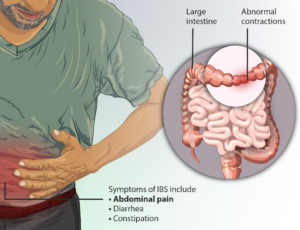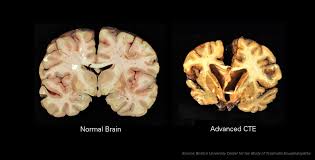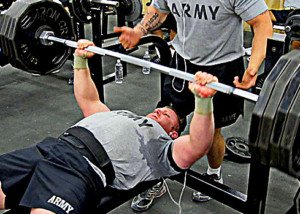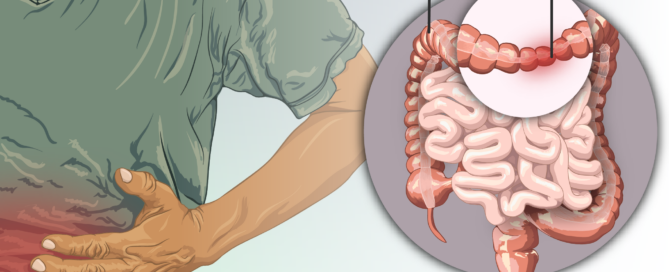Convincing Someone Who Denies Depression to Stay on Antidepressant

Do you know a very depressed person who doesn’t think they are depressed?
You’d think that of all mental illnesses, depression would be the one that the patient is well-aware of.
But in the case of my mother, she was in denial, or at the most, attributed her profound depression to “the pain,” that is, pain from carpal tunnel syndrome!
My mother had a bad case of carpal tunnel syndrome in both hands, but her depression symptoms were alive and kicking well before the carpal tunnel syndrome began making its grand entrance, and the depression symptoms continued well-after carpal tunnel surgery.
However, if you have joint or nerve pain, clinical depression can amplify your perception of it.
My mother refused to try an antidepressant, and my father, oddly enough, felt the same way.
After six weeks, I finally convinced him that my mother needed an antidepressant, and that evening, my mother took her first antidepressant. The next morning she awakened feeling wonderful, and no longer did her whole body hurt.
Pre-antidepressant, my mother often said, “I’m depressed about all this pain,” but then would become teary-eyed over trivial issues.
Carpal tunnel syndrome doesn’t make you sob spontaneously throughout the day or want to stay in bed all day.
Major depression does. And I told her that — both pre-antidepressant and post-antidepressant.
Despite the antidepressant’s marvelous effect, she continued insisting that she didn’t have clinical depression.
It’s important that a person with depression have insight into their situation, rather than deny it. Otherwise, they won’t be as amenable to treatment.
I explained to my mother numerous times that her depression was present before the pain from the carpal tunnel syndrome developed, and before her shoulder pain developed, and that physical pain that’s localized would not make her completely shut down, lose interest in things that were once pleasurable, and have feelings of wanting to go off into the woods and die. “Only depression can do that,” I’d say.
I’d continue: “Since you’ve been taking this antidepressant, you’ve had no complaints of your whole body hurting. That’s all disappeared since you’ve been on Cymbalta. The drug has suppressed your perception of your shoulder pain, which is why you no longer cry when you have a pain attack.”
Several times my mother wanted to go off the antidepressant, but I kept reminding her about the key points:
“The reason you feel so good now is because you’re ON the drug. You have to stay on it until everything blows over, until you are completely out of the woods. It’s helping you through all of this.”
Keep reminding your depressed loved-one: “The reason you feel so good is because of the antidepressant. The drug is working. Go off it and you’ll relapse.”
My mother found it hard to believe that if she stopped taking the antidepressant, she wouldn’t continue feeling so good.
If your depressed loved-one announces they’re ready to stop taking their antidepressant, and they haven’t been on it for long, and any stressors that triggered or aggravated their depression are still present — then never be afraid to tell him or her the raw truth:
“If you stop taking the drug, you will relapse. You will sink back into that ugly dark hole and your entire body will feel crummy all over again. You’ll be crying and feeling like you’re dying.
“You won’t know how to smile or feel joy. Think of how wretched and miserable you felt before you began taking the antidepressant.
“You’ll return to that hell hole if you stop taking the drug. You absolutely must stay on this medication for a while, and then when everything blows over and you’re stabilized, THEN we will get you off of it. Trust me.”
This kind of talk sunk a little more into my mother with each time I gave it. Eventually, she was diagnosed with hypothyroidism, and must take a thyroxine pill every morning.
All evidence points to the depression being secondary to the hypothyroidism. An underactive thyroid can cause many symptoms including clinical depression.
My mother lost weight because the depression minced her appetite; suffered hair loss; and often complained of feeling cold even though everyone else felt fine — and nobody picked up that these two latter symptoms suggested early hypothyroidism.
And then the depression swept in with a 1-2 punch, even though there were subtle signs of its beginning for weeks beforehand.
“I feel so great now,” my mother told my brother, after being on the thyroxine for a while, and still taking the antidepressant, “that I no longer need these drugs. Why can’t I stop taking them?”
My brother responded: “The reason you feel so great is because you are taking two medications: thyroxine and Cymbalta. If you stop taking them, you’ll go back to square one, and it may take a whole week to get you back to where you are now. The reason you feel so good is because you are on two medications.”
At that point, my mother finally realized that she needed to stay on the antidepressant for a little while longer, and that the thyroxine pill will be very long-term.
Because it’s apparent that the depression is secondary to the hypothyroidism, and because the thyroxine’s effects are now fully kicked in, my mother is now in the process of tapering off the antidepressant, which eventually was switched to Effexor due to an insurance coverage change.
(Original publication date: January 2010)
 Lorra Garrick has been covering medical, fitness and cybersecurity topics for many years, having written thousands of articles for print magazines and websites, including as a ghostwriter. She’s also a former ACE-certified personal trainer.
Lorra Garrick has been covering medical, fitness and cybersecurity topics for many years, having written thousands of articles for print magazines and websites, including as a ghostwriter. She’s also a former ACE-certified personal trainer.
.
Top image: freepik
Minimize Daily Hair Fall: 8 Hacks to Prevent Hair Loss

Simply changing the way you do things in your daily life will minimize hair loss.
Use Your Fingertips
The first way to reduce the number of hairs that fall out of your head every day is to use the pads of your fingertips—not your nails—to wash your hair.
Though rubbing in good with your fingernails feels great, the sharp edge of fingernails can tear hair out of its follicles.
The soft pads of your fingertips will be gentler to the roots. And don’t rub and scrub; instead, massage and caress.
I might add that hairs will be needlessly pulled out as you wash your hair if you have the slightest hang nail. Make sure your nails are filed smooth before washing your hair.
A nail need not be hanging to yank a hair out of its root. Check your nails before washing so that they don’t snag any strands.
Wringing out Water
When it’s time to wring the excess water out, do not wring close to your scalp. Grab the hair further away, then wring below that point.
How to Use a Towel
Do not rub your scalp with the towel. Simply place the towel over it and press your hands to it firmly for several moments, then wrap it up.
Charging Your Phone
Be very aware of little things that can cause needless loss of hairs.
Recently I was placing the charger into my cell phone, and a strand of hair somehow got between the charger connector and the insertion point in the phone.
As I inserted, the strand was yanked out of its root. I know that’s only one strand, but little ridiculous things like this every day add up.
Removing Bobby Pins and Clips
To minimize hair loss, carefully and patiently remove clips, bobby pins and any other gadget or trinket in your hair.
Make sure that the tips of bobby pins are smooth and round. Not all bobby pins are alike.
Some bobby pins are very difficult to remove without taking some strands with them.
Scarves, Hats, Etc.
When removing something from your head (ear muffs, hats, bandanas, anything), remove slowly and carefully.
If some strands begin getting yanked, you’ll have time to reverse this situation if you remove the item in very slow motion.
Scalp Itching
Be very cognizant of mindless scalp scratching throughout the day.
When scratching, do not use your fingernail. Instead, gently massage the itchy part with the pad of a fingertip.
Lying Down
Never lie down with a part going down the center of the back of your head.
If your head is against something while your body is horizontal or even slightly elevated, this will tend to pull the strands in the direction that the parting makes them go in.
In other words, if you’re wearing pig-tails, do not take a nap in them, let alone go to bed with them still in. You’ll even feel the pulling if you do.
There are other ways yet to minimize daily hair loss, but I thought I’d provide less commonly-written-about tips that you don’t normally come across.
 Lorra Garrick has been covering medical, fitness and cybersecurity topics for many years, having written thousands of articles for print magazines and websites, including as a ghostwriter. She’s also a former ACE-certified personal trainer.
Lorra Garrick has been covering medical, fitness and cybersecurity topics for many years, having written thousands of articles for print magazines and websites, including as a ghostwriter. She’s also a former ACE-certified personal trainer.
.
Top image: Freepik.com, Ronald Plett
PULMONARY EMBOLUS: Prolific Killer, Very Common, Symptoms
Far more people die every year from a pulmonary embolism than you think.
These blood clots in the lungs may cause cardiac arrest, and often, the cause of death is listed as just that—cardiac arrest.
When a person dies, their heart stops.
When a person’s heart stops, they die (when they can’t be resuscitated, of course).
But what causes cardiac arrest?
In many cases, it’s a pulmonary embolism — a most unrecognized lethal medical condition.
“Yes, it is often an unrecognized killer, frequently because the picture may be dominated by coexisting conditions such as those that are associated with slowing of blood flow to many parts of the body, especially the veins of the lower extremities,” says Morton Tavel, MD, Clinical Professor Emeritus of Medicine, Indiana University School of Medicine, and author of “Health Tips, Myths and Tricks: A Physician’s Advice.”
Dr. Tavel continues, “The variety of predisposing conditions can include debilitating diseases forcing prolonged bed rest, post-surgical states and congestive heart failure.”
A pulmonary embolism originates from a blood clot in a vein (usually in the lower leg, but it can also be behind the knee, the upper leg or pelvic area).
The Centers for Disease Control provides frightening statistics:
Every year in the U.S., 60,000 to 100,000 people die from a P.E.
In about one-fourth of all cases, sudden death is the first symptom.
Below is very helpful information that will answer a lot of your questions — even highly specific questions — about this underrated killer.
DIAGNOSIS
MISCELLANEOUS
- Why So Many Pulmonary Embolisms in Hospitals Are Fatal
- Can Movement Cause a DVT to Dislodge & Embolize?
- Are All Pulmonary Embolisms the Same?
SYMPTOMS
- Trouble Breathing, Chest Pain After Joint Replacement Surgery
- Sudden Difficulty Breathing, No Other Symptoms
TREATMENT

Dr. Tavel’s medical research includes over 125 publications, editorials and book reviews in peer-reviewed national medical journals. He was formerly director of the cardiac rehabilitation program at St. Vincent Hospital in Indiana. mortontavel.com
 Lorra Garrick has been covering medical, fitness and cybersecurity topics for many years, having written thousands of articles for print magazines and websites, including as a ghostwriter. She’s also a former ACE-certified personal trainer.
Lorra Garrick has been covering medical, fitness and cybersecurity topics for many years, having written thousands of articles for print magazines and websites, including as a ghostwriter. She’s also a former ACE-certified personal trainer.
.
Top image: Freepik/8photo
Source: cdc.gov/ncbddd/dvt/data.html
How Tall Is Too Tall for a Woman: Cutoff Point?

Here’s how tall women and teen girls can learn to embrace their blessed height and conquer the world with high heels, high confidence and empowerment.
Below are links to a huge assortment of articles for tall women (and teen girls).
CONFIDENCE
- Why Very Tall Women Should Feel Feminine
- Tall Women Who Feel Huge Around Other Women, Even Men
- How Tall Women Can Overcome Negative Comments About Height
DATING
- Should Tall Women Date Short Men?
- Are Men Intimidated by Tall Women?
- Do Tall Men Really Prefer Short Women?
- Dating Advice for Tall Women
- Tall Women Preferred By These Three Men
- What Tall Women Dating Shorter Men & Vice Versa Must Know
- Will Tall Women Ever Find Husbands?
- 5 Smart Dating Tips for Tall Women
HEELS vs. FLATS
- Why Tall Women Should Wear High Heels
- Tall Women Should Stop Wearing Flats Because They Are Unflattering!
- Tall Women Confidence Boosters: Heels vs. Flats
- How Tall Women Can Gain Confidence to Wear High Heels
- Why Do Tall Women Wear High Heels?
- High Heels and Tall Women: When Men Make Mean Comments
- High Heels Will Boost Tall Women’s Confidence
- Six Very Tall Women Explain Why They Love High Heels
- Should Tall Women Wear High Heels If Husbands Want?
MISCELLANEOUS
- Tall Women: Top 10 Sports for You Regardless of Body Type
- The Height No Woman Wants: You’ll Be Surprised
- How Tall must a Woman Be to Get Comments About Height?
- When Tall Women Get Mistaken for Men
- Tall Women, Short Men: A Woman Wants to Feel Protected
- Are You a Tall Woman Jealous of Taller Women?
- The Height No Woman Wants: You’ll Be Surprised
TEENS
- Tall Teen Girls Must Wear High Heels for Confidence Boost
- Why Tall Teen Girls Can’t Get Boyfriends
- Great Sport for Tall Women, Teens: & It’s Not Basketball or Volleyball
 Lorra Garrick has been covering medical, fitness and cybersecurity topics for many years, having written thousands of articles for print magazines and websites, including as a ghostwriter. She’s also a former ACE-certified personal trainer.
Lorra Garrick has been covering medical, fitness and cybersecurity topics for many years, having written thousands of articles for print magazines and websites, including as a ghostwriter. She’s also a former ACE-certified personal trainer.
PVCs: DANGEROUS or BENIGN? LOOMING HEART ATTACK or NOTHING?

PVC stands for premature ventricular contraction.
It creates the illusion of an extra heartbeat, especially if there are two or three in a row.
And sometimes, it feels as though the heart has skipped a beat. This makes some people believe they’re about to have a heart attack.
Frequent premature contractions can produce tremendous anxiety.
“A PVC is a premature ventricular contraction, which means the beat is originating in the ventricle, not the atria (normal site of origin),” explains Yaser Elnahar, MD, a cardiologist with Hunterdon Cardiovascular Associates in NJ.
“Rare [occasional] PVC’s are very common and are not dangerous.
“Frequent PVC’s or runs of PVC’s can be very dangerous or even fatal when it becomes ventricular tachycardia.
“If a person has frequent premature ventricular contractions or runs of PVC’s, the cardiologist usually tries to make sure there are no blocked arteries as the cause. If the arteries are fine then we look for other causes.”
Below are links to articles about PVCs with answers from cardiologists.
 Dr. Elnahar has publications in the Journal of Atrial Fibrillation, the Journal of Clinical Medicine and Research, Reports in Medical Imaging, and more.
Dr. Elnahar has publications in the Journal of Atrial Fibrillation, the Journal of Clinical Medicine and Research, Reports in Medical Imaging, and more.
 Lorra Garrick has been covering medical, fitness and cybersecurity topics for many years, having written thousands of articles for print magazines and websites, including as a ghostwriter. She’s also a former ACE-certified personal trainer.
Lorra Garrick has been covering medical, fitness and cybersecurity topics for many years, having written thousands of articles for print magazines and websites, including as a ghostwriter. She’s also a former ACE-certified personal trainer.
.
Top image: Shutterstock/Hriana
Why Brain Damage in CTE Worsens Decades after Athlete Retires

The brain damage of CTE begins during the athlete’s career, yet mental symptoms don’t start showing until years later when the athlete is much older.
Chronic traumatic encephalopathy (CTE) starts developing years, sometimes even decades, after the football player retires, but why?
CTE refers to a progressive damage to the brain that continues to occur—even after the athlete leaves his sport–and all those hits in the head–far behind.
You’d think that the most damage to the athlete’s brain would be whatever damage was present at the time of his retirement–when he may very well still be in his 20s—and that the “damage” stays at that level (provided the athlete never receives a hit in the head again).
But oddly, that’s only the beginning for some retired football players and boxers. The snowball continues rolling down that hill–it gets bigger and bigger. Why is this?
What are the answers?
“The short answer is we really do not know why,” points out neuropsychologist Kenneth Podell, PhD, FACPN, and co-director, Houston Methodist Concussion Center, concussion specialist for the Houston Texans and Houston Astros.
The focus here now isn’t why the symptoms of CTE start surfacing years after the last blow to the head. This is about why the brain damage continues getting worse.
The devastating symptoms are delayed “because cell death in the brain can take years to occur, and must reach a critical level of damage or threshold before they clinically express themselves,” notes Dr. Podell.
Why does the snowball of CTE keep getting bigger?
The concussion or slams to the athlete’s head are the primary mechanism. The snowball, so to speak, is the secondary mechanism.
“The primary damage in CTE, at least one of the thoughts,” begins Dr. Podell, “is that the head hits and concussions damage the tau proteins that act like structure bridges or a lattice that supports the microtubules (channels that transport information down the length of an axon or nerve cell) for communication with other nerve cells.”
Dr. Podell further explains, “Without the proper support and lattice, these microtubules will start to break down (secondary damage) which can take longer to occur.”
Conjecture of CTE
“Again this has to be proven as definitive,” says Dr. Podell. “We simply do not understand why CTE occurs and if it continues developing after the athlete retires.”
Brain injury experts believe that a genetic component just may be involved in CTE, but this doesn’t explain why this catastrophic damage keeps getting worse after the insult has ceased.
“It could be that all of the damage to the brain was done at the time of the insult and it simply takes years for it to express itself, or — that CTE itself actually worsens over time.”
Dr. Podell continues: “Or it simply can be a cascading effect [think of that snowball]. The only way to quantify CTE would be through a brain autopsy.
“Techniques are currently being developed for positron emission tomography scanners to image CTE in living people, but we are not at a point to do serial quantification.”
The progression of CTE may also be influenced by aging and genetics, but to what extent? This is not understood.
Furthermore, many retired athletes or football players with CTE are in their 40s and 50s.
Although the symptoms can be subtle at first and therefore overlooked for years, this certainly does not explain the progressive feature, given the absence of continuing concussions or serious hits to the head.
Autopsies of the Victims
Postmortem examinations of CTE patients reveal a pathological accumulation of plaques and tangles in their brains.
“We really have not advanced the science enough to know the cause of the disease course/progression of chronic traumatic encephalopathy,” says Dr. Podell.
 Dr. Podell is a board certified neuropsychologist specializing in the assessment and treatment of patients who have sustained any type of brain injury or disease.
Dr. Podell is a board certified neuropsychologist specializing in the assessment and treatment of patients who have sustained any type of brain injury or disease.
 Lorra Garrick has been covering medical, fitness and cybersecurity topics for many years, having written thousands of articles for print magazines and websites, including as a ghostwriter. She’s also a former ACE-certified personal trainer.
Lorra Garrick has been covering medical, fitness and cybersecurity topics for many years, having written thousands of articles for print magazines and websites, including as a ghostwriter. She’s also a former ACE-certified personal trainer.
.
Top image: Boston University Center for the Study of Traumatic Encephalopathy
Lose 100 Pounds with Three Strength Training Exercises

You need only three strength training exercises to drop 100 pounds of unhealthy body fat.
There’s nothing gimmicky about what I’m going to tell you. If you’re a hundred pounds overweight, or weigh 450 pounds (think of losing 100 pounds three times), you can lose 100 pounds with the following three exercises, PLUS a controlled, clean diet:
Deadlift
Squat
Bench press
If you were to employ only these exercises and nothing else as far as structured exercise, I’d recommend a three-times-a-week regimen, such as Mon/Wed/Fri or Tues/Thurs/Sat.
All the muscles in your body will get trained with the deadlift, squat and bench press.
These three exercises emphasize large muscle groups, though the small ones like biceps and triceps DO get worked. So do the abs!
To lose 100 pounds with these three exercises, follow this formula:
1) Do five sets of each for all three training days.
2) Take one minute of rest (no longer) between sets, and 2-3 minutes in between exercises.
3) Set the resistance so that it’s possible to do eight repetitions but impossible to do more than 12. If you can do more than 12, increase the resistance. If you can only do seven reps, decrease.
Point 3 is tricky because it will be impossible to take only one minute of rest and keep pumping out an 8-12 rep max using the SAME weight load.
For example, suppose your first bench press set is 11 reps for 95 pounds; you absolutely cannot do any more.
Rest one minute. Your second set at 95 pounds might be eight or nine, but it’s more likely you’ll only be able to do seven reps.
This falls out of the eight to 12 range. In anticipation of this, you’d have to quickly reset the barbell to a lighter weight before the minute was up.
It’s easier to do this if the 95 pounds are loaded with two 10-pound plates and a five-pounder on each side, rather than a 25-pounder on each side (when using a standard Olympic bar which weighs 45 pounds).
Because then you can just slip off the five-pound plates to lighten the barbell; you’ll be able to press 85 pounds within that 8-12 rep range.
If you take off TOO much weight, you’ll feel like you can go beyond 12 reps.
What Exactly Are the Deadlift, Squat and Bench Press? They Are Shown Below

Preparing for the deadlift. Freepik.com

Midpoint of the deadlift. Freepik.com

Completion of the deadlift. Freepik.com

Squat. Depositphotos.com

Bench press. Depositphotos.com
Why is the 8-12 rep range so important for losing 100 pounds?
It’s time under tension. If you don’t do enough reps, the muscle cells won’t be subjected to a long enough tension.
When enough tension is imposed on them, they are forced to develop “metabolic machinery.”
The acquisition of this machinery within each muscle cell, and the sustenance of it, requires energy. This energy is pulled from stored body fat.
If the time under tension goes for too long (more than 12 reps), the focus will be on fewer fast twitch muscle fibers and more on slow twitch.
Slow twitch is designed for endurance. If you can do more than 12 reps, the weight is too light to incite optimal acquisition of metabolic machinery.
If you must struggle to get within the 8-12 range, the weight is heavy enough to maximize metabolic machinery.
This doesn’t mean that a few sets here and there can’t be a 6-7 rep max or 13-14 rep max.
There will be times you’ll mis-judge how much to reduce the resistance, for example, and you’ll find yourself barely getting in six reps, or finding that 12 weren’t all that hard. It’s okay to periodically make this miscalculation.
But the general protocol is the 8-12 rep max to build up that metabolic machinery which will accelerate your resting metabolism.
Furthermore, the one-minute rests will amplify this effect. Longer rests will take you further out of range, and your muscle cells will develop more contractile proteins rather than metabolic machinery.
If the shift is on contractile proteins, you’ll get stronger faster; there’s less development of the metabolic innards and instead, an increase in contractile proteins.
Enough of the science—just trust me: Do the deadlift, squat and bench press, as I’ve described, and you’ll lose 100 pounds (as long as you eat sensibly—no gorging on pizza after your workouts).
Morbidly obese people will have a challenge learning the back squat (free barbell across back), so I recommend using the Smith machine until you lose enough weight to begin learning the free barbell squat. The goal is to hit parallel with excellent form!
The deadlift is easier for a morbidly obese individual to learn, but this exercise demands flawless form.
The bench press is the easiest because you lie on a bench, but for best results and safety, you should use good form.
You can lose 100 pounds with these three exercises by following the protocol described in this article.
 Lorra Garrick is a former personal trainer certified through the American Council on Exercise. At Bally Total Fitness she trained women and men of all ages for fat loss, muscle building, fitness and improved health.
Lorra Garrick is a former personal trainer certified through the American Council on Exercise. At Bally Total Fitness she trained women and men of all ages for fat loss, muscle building, fitness and improved health.
Can IBS Cause Ribbon Stools?

You’ve heard that colon cancer can cause ribbon stools, but IBS can also do this.
“Ribbon stools are not uncommonly seen with IBS, although excluding other causes, such as anatomic problems, inflammatory disease, etc., would be prudent,” says Michael Blume, MD, a gastroenterologist at MedStar Good Samaritan Hospital, Baltimore.
The exclusion process should also include colon cancer, even if you’ve had irritable bowel syndrome for years. IBS does not protect against colon cancer.
How does IBS lead to poops that are shaped like ribbons?
Dr. Blume says, “This usually occurs because if there is spasm in the colon, it may give one the sensation that there may be some obstruction and cause a change in the caliber of the stool.
“When one’s colon goes into spasm, as often occurs in IBS, the muscles in your large intestine constrict.
“Remember that you have muscles in your intestines, also, although they are somewhat different than the ones in your arms and legs that you voluntarily control.”
The type of muscle in your GI tract is called smooth muscle, and the muscle that enables you to bench press a barbell or comb your hair is called skeletal.
Dr. Blume says that when the intestinal muscles constrict, “they cause the diameter of your large intestine to become narrow, and when this occurs, one’s stools may appear narrow.”
It can still be unnerving, though, when you see ribbon stools in the toilet bowl, even if you’ve been diagnosed with IBS.
But if you’ve never had a colonoscopy yet have been diagnosed with IBS, you need to undergo a colonoscopy.
It’s not impossible for someone to hear, “You’re too young to have colon cancer, so you don’t need a colonoscopy; this looks like IBS. So don’t worry about the ribbon bowel movements.”
For a true diagnosis of IBS, all other possible causes of thin narrow stools — no matter how remote — should be ruled out.
Different causes have different treatments. Plus, people in their 20s can get colon cancer.
- 5.1% of U.S. colon cancer cases are in people 35-44.
- 2% are in people 20-34.
- 0.3% are under 20.
Source: The Surveillance Epidemiological and End Results Program
If all you have is IBS causing your long pencil stools, all it takes is a colonoscopy to set your mind at ease.
 In practice for 25+ years, Dr. Blume treats over 65 conditions including abdominal pain, appetite loss, blood in stool, celiac disease, colon cancer, esophageal and liver disease, gas and IBS.
In practice for 25+ years, Dr. Blume treats over 65 conditions including abdominal pain, appetite loss, blood in stool, celiac disease, colon cancer, esophageal and liver disease, gas and IBS.
 Lorra Garrick has been covering medical, fitness and cybersecurity topics for many years, having written thousands of articles for print magazines and websites, including as a ghostwriter. She’s also a former ACE-certified personal trainer.
Lorra Garrick has been covering medical, fitness and cybersecurity topics for many years, having written thousands of articles for print magazines and websites, including as a ghostwriter. She’s also a former ACE-certified personal trainer.
.
Top image: myupchar.comen
Can IBS Cause Nausea after a Bowel Movement?
Ever feel nauseous after a bowel movement and you have irritable bowel syndrome? Could there be a connection?
“The mechanism of IBS is abnormal motility in one form or another (constipation or diarrhea); hence, after a bowel movement when the intestinal tract is contracting (perhaps in an exaggerated fashion because of IBS), nausea may set in,” says Dr. Saad Habba, MD, an attending consultant physician (gastroenterologist) at Overlook Medical Center in Summit, NJ.
“Nausea is not a result of colon (large intestine) motility abnormality. It is a result of upper gastrointestinal tract dysfunction.
“Because IBS may affect the whole intestinal tract, it is therefore not surprising that nausea may occur.”
Symptoms Associated with IBS Besides Diarrhea, Constipation and Nausea
• Pain and cramping in the abdomen. May occur in the middle and/or lower stomach, but rarely occurs only in the upper stomach.
• Harder than normal stools but without constipation.
• Mucus in the bowel movement.
• Excess gas.
• Bloating or a little swelling of the abdomen.
• Food intolerance. What this means is that certain foods trigger or make the IBS symptoms worse. Which foods these are will vary from one person to the next.
• Poor sleep.
• Anxiety and depression. What’s interesting about these two is that they are a chicken-and-egg situation. Which comes first? Anxiety or depression can result from the disruptions that IBS causes in a person’s life.
On the other hand, anxiety or depression have been known to cause symptoms similar to IBS.
The One Symptom that Irritable Bowel Syndrome Never Causes
IBS, which is a medical condition of exclusion, never causes blood in the bowel movements.
When blood is present, it’s either red, maroon or black. If it’s black it’ll look like hot tar. If you see blood, see your doctor.
If you have nausea before a BM, and then you end up having a lot of diarrhea which immediately resolves the nausea, this may not be irritable bowel syndrome. It may be microscopic colitis – which is often misdiagnosed as IBS.
 Dr. Habba pioneered the concept of IBS being a wastebasket diagnosis and collection of different entities rather than a true single medical condition. He’s been presented and published in 26 national and international medical journals and symposia.
Dr. Habba pioneered the concept of IBS being a wastebasket diagnosis and collection of different entities rather than a true single medical condition. He’s been presented and published in 26 national and international medical journals and symposia.
 Lorra Garrick has been covering medical, fitness and cybersecurity topics for many years, having written thousands of articles for print magazines and websites, including as a ghostwriter. She’s also a former ACE-certified personal trainer.
Lorra Garrick has been covering medical, fitness and cybersecurity topics for many years, having written thousands of articles for print magazines and websites, including as a ghostwriter. She’s also a former ACE-certified personal trainer.
.
Top image: ©Lorra Garrick
Can Bloody Mucous Be Caused by Irritable Bowel Syndrome?
Do you have IBS and have noticed what looks like blood in the mucous that comes out with your bowel movements?
“One not uncommonly sees mucous in the stool with IBS, but not blood,” says Michael Blume, MD, a gastroenterologist at MedStar Good Samaritan Hospital, Baltimore.
“Your colon normally produces mucous, mostly to act as a lubricant.
“When your colon gets somewhat irritable, it makes more mucous, and one may see it in the stool. It may look scary, but usually is not dangerous.
“Bleeding, however, is not a sign of IBS, as a rule, so when one sees bleeding or bloody mucous, it would indicate that there may be some other problem going on, and should prompt that person to seek medical attention.”
Blood in the mucous could be finding its way there simply because the mucous is part of the stool movement.
If it’s truly blood in the mucous, there’s likely blood somewhere else in the bowel movement—quite possibly imperceptible to your naked eye.
Red is easier to see when it’s mixed with something white or cream colored.
If you have IBS, it’s not impossible to develop an unrelated condition that causes blood in your stools.
The blood may just happen to get mixed with the mucous, making it easier to see.
If you’re worried about any symptoms, make an appointment with your gastroenterologist.
 In practice for 25+ years, Dr. Blume treats over 65 conditions including abdominal pain, appetite loss, blood in stool, celiac disease, colon cancer, esophageal and liver disease, gas and IBS.
In practice for 25+ years, Dr. Blume treats over 65 conditions including abdominal pain, appetite loss, blood in stool, celiac disease, colon cancer, esophageal and liver disease, gas and IBS.
 Lorra Garrick has been covering medical, fitness and cybersecurity topics for many years, having written thousands of articles for print magazines and websites, including as a ghostwriter. She’s also a former ACE-certified personal trainer.
Lorra Garrick has been covering medical, fitness and cybersecurity topics for many years, having written thousands of articles for print magazines and websites, including as a ghostwriter. She’s also a former ACE-certified personal trainer.
.
























































